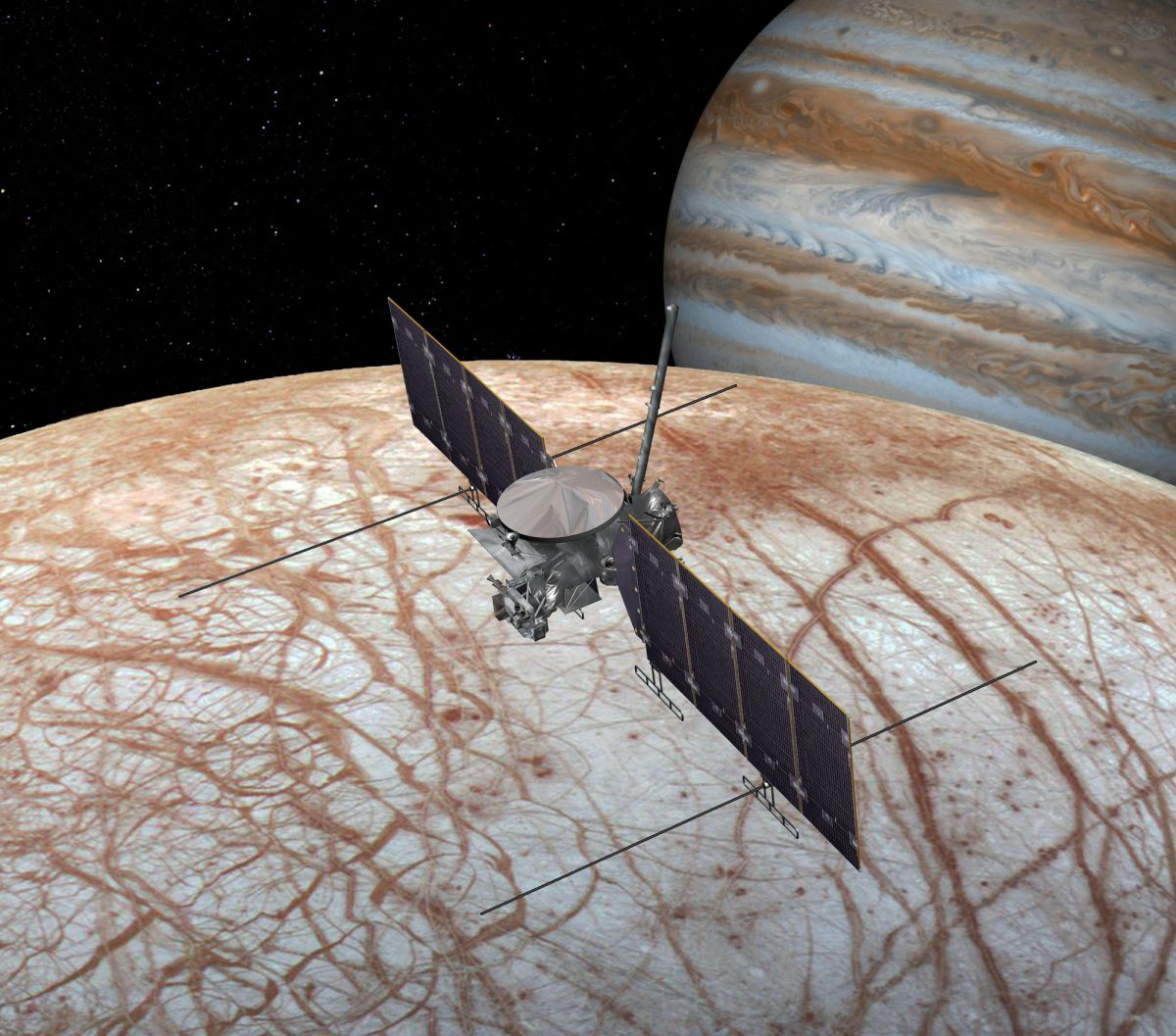NASA is preparing to finally send their first probe to Europa, one of Jupiter’s 95 moons. The probe, dubbed the “Europa Clipper,” will set itself into Jupiter’s orbit rather than Europa’s, as orbiting the moon would expose the probe to too much of Jupiter’s radiation. The difference is so drastic that orbiting Europa would result in a dead probe within months, while orbiting Jupiter would allow it to live multiple years.
The probe is estimated to arrive in the year 2030, taking five and a half years to approach the planet. It will approach as close as 16 miles from Europa’s surface and is estimated to make around 40 to 50 flybys during its lifetime, where it will pass by a different location each time in an effort to map out nearly the entire moon.
The purpose of this mission is to search for possible areas on the moon that could support life, as Europa is covered in an icy crust which scientists believe is laying upon an ocean of water. The probe will gather measurements of the moon to determine its ability to support life.
The Europa Clipper has three main objectives. It will aim to determine how thick Europa’s icy surface is and how the ocean beneath it interacts with said surface, it will investigate the moon’s composition to determine if it would allow for life to form and it will study how features on the surface of the moon have formed as well as searching for any recent geological activity.
The Europa Clipper will be launched sometime during a three week launch window that begins on Oct. 10. The mission is estimated to have cost around $5 billion.




